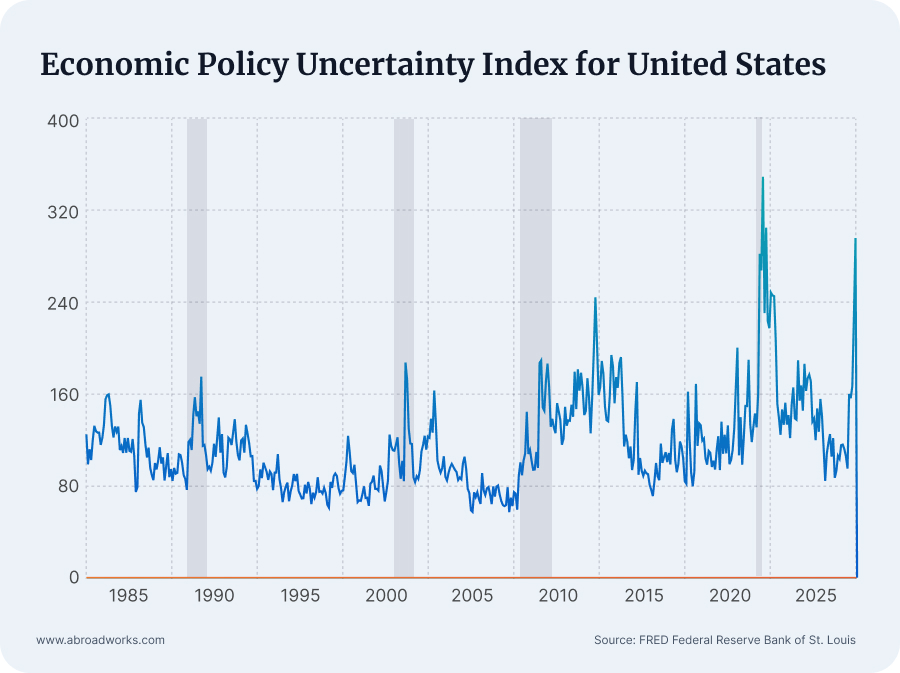Table of Contents
America’s Uncertain Economic Future
Offshoring in Economic Downturns
What Can Labor Offshoring Do for You?
The Bottom Line
Contributors

David Landau
Contributor
America is headed into an uncertain economic future. Whether or not the Trump administration’s tariffs will create an economic decline is unknown, but tariffs have a less-than-stellar history. Right now, the waters ahead are murky to say the least, and many businesses are taking steps to ensure their future in these uncertain times.
Historically, in times of economic uncertainty, firms have reacted by reducing expenses as best as they can. Square one for cutting expenses could mean the firing of “unnecessary” workers. But rather than making do without vital employees, other options do exist, like making the switch to offshore labor.
By switching to offshore labor, a business can still have the vital employees it needs to function and reduce the expenses they are burdened with in an uncertain economy.
America’s Uncertain Economic Future
Tariffs have a mixed historical reputation. While there have been instances where tariffs have helped spur domestic industry and business, they have also caused significant economic hardship. Among the many contributing factors to the Great Depression were sweeping tariffs on various imports. Rather than being the economic boon they were hoped to be, they only contributed to one of the worst periods of economic decline in history.
While we don’t know whether the economy will benefit or be harmed by the administration’s current trade policies, we do know that the future is uncertain. In fact, the Federal Reserve’s economic data platform hasn’t reported such high levels of Economic Policy Uncertainty since the start of COVID-19. Even the Great Recession didn’t see such significant levels of doubt regarding the future health of the economy.

Source: FRED Federal Reserve Bank of St. Louis
Offshoring in Economic Downturns
Businesses can and absolutely should buffer themselves against our unknown future. Among the most basic of first steps is to reduce expenses. Businesses need to ensure that a decline in future income can be balanced against a decline in expenses.
While there are many ways a business can cut down on the outflow of money, first on the chopping block tends to be employees that they deem “unnecessary”. Labor tends to be the single greatest expense a business faces, and it’s often ripe for cuts. However, while firing employees can balance out the effects of a declining income, it may also have disastrous consequences.
Without the necessary labor a business needs to keep going, the wheels can fall off. Products may not be produced as fast or efficiently, and the basics of business may be lost in the shuffle. All the while, what employees that a company chooses to hang on to can be caught in a growing tide of work once handled by others, and sometimes better-equipped employees.
While letting go of employees may help a business reduce its expenses, it may also cause a business to reduce its income. This could result in a net negative, where even though businesses are trimming down to balance out a declining income, they may still be losing money thanks to reduced productivity.
But what if there was another way out for a business trying to cut costs? What if a business could reduce expenses without having to cut the vital employees it needs to survive?
Offshore labor can provide a business with that alternative outlet.
What Can Labor Offshoring Do for You?
Labor offshoring has a long history of helping businesses escape economic downturns. Following the 2000 Dot-Com Bust, major players like IBM, Dell, and Oracle shifted large portions of their workforce offshore. During the 2008 Great Recession, a number of manufacturing businesses, including Caterpillar and General Electric, began moving production to Asia and Latin America.
Labor offshoring was once a practice that applied almost exclusively to Large Corporations, as they were the only ones who could afford to make such a massive shift in their operations to begin with. But it has and has the power to save their businesses in times of economic uncertainty and decline, and it certainly helped them in the past. But things have changed, and now even small businesses can benefit from the cost-saving power of offshore labor.
COVID-19 created a revolution in labor, changing how nearly every aspect of business is managed. What was once relegated to a group of people working in a single office can now be managed by a workforce located anywhere in the world, thanks to remote work technologies.
The now ubiquitous nature of remote working software like Microsoft Teams, Zoom, and Google Meet, and other forms of online communications and collaboration software means that even the smallest of businesses can easily hire workers anywhere in the world. Just as the largest businesses on the planet could rely on moving operations offshore during times of economic uncertainty, so can the smallest businesses today.
By shifting to offshore labor, businesses can tap into a global talent pool for less than domestic workers. Anything from accounting, marketing, customer support, tech support, management, and product design and development can be handled by workers anywhere in the world at a lower cost than their domestic counterparts.
By using offshore labor, businesses can still have the necessary employees they need to march forward while cutting the costs they need to in uncertain times.
The Bottom Line
We are in the midst of a period of unprecedented economic uncertainty, and the data proves it. While businesses naturally respond by reducing expenses and often letting go of vital employees in the process, there are other options available.
History has shown that the best thing that a business can do to both reduce its expenses and maintain a force of qualified employees is to switch to offshore labor.
In this time of economic uncertainty, the best thing a business can do to ensure its future is to make the most of offshore labor.
